Issue #70: Mitchell’s Matzo Ball Master Class
The Jewish Holiday Season Is Upon Us, But You Should Make Matzo Balls Any Day
Days after the official end of summer it feels like we are weeks into autumn. The Jewish holiday season has begun. It’s sweater weather. The flow of people inside, outside, and through the city definitely seems more typical for this time of year. Yet a fourth jab, truncated business hours, compromised service, a few empty shelves here and there remind one of the reality that a pandemic still looms. Can the elections really only be a few weeks away? Be sure to register to vote and then be sure to do it. Keep cooking. Thank you for your continued support of this experiment in independent food journalism. —Mitchell
I realize I’m late to the party. If you celebrate Rosh Hashana, you will have already honeyed the apples, braised the brisket, and made the matzo balls for your chicken soup. Still, with this issue I offer you my simple but reliable—dare I say famous—recipe for matzo balls. Tag it for one of the many Jewish holidays coming down the pike. Better yet, don’t wait for a holiday. Matzo balls shouldn’t be relegated to special feasts, Jewish or otherwise. Yesterday, when Nate and I stopped for lunch at the Pastrami Queen on a New Year’s stroll through Manhattan’s Upper East Side, we saw locals and tourists, young and old, enjoying bowls of matzo ball soup. (Aside: We overheard some tourists express shock at the concept of celery-flavored soda, while Nate and I expressed shock at the conversation about mayoral politics we overheard among the locals.)
I know now from my work with Asif: Culinary Institute of Israel and the Galilee Culinary Institute that matzo ball soup is one of the few Ashkenazi foods to hold a special place in the Israeli culinary canon. But here at home, like bagels and knishes, matzo ball soup has become arguably more closely associated with New York City than with Judaism. One of those bowls of soup at Pastrami Queen was being enjoyed by a former municipal politician, who noted loudly enough for the restaurant to hear that his people were “you know, originally from the south, slave trade, and all.”
I am famous—granted, in a very small circle—for my matzo balls and chicken soup, which are actually my mother’s matzo balls and chicken soup. My mother was a great cook with a limited repertoire, but a skilled hand. Although she herself preferred sinkers, that is, leaden matzo balls that are difficult to cut, let alone chew, she made light and airy floaters that were beloved by everyone else.
If you asked her, she’d say that all she did was follow the recipe on the Streit’s matzo meal box. But when I wrote my Jewish cookbook The Mensch Chef, I watched her carefully, noticing that her measurements weren’t…um…exact. For example, she always had extra-large or jumbo eggs on hand, even though the recipe called for large. Having lost her eyesight, she was imprecise about measuring the matzo meal, shaking more from the box than the measuring cup could hold. What’s more, she was always the sort of cook who believed that if two tablespoons of schmaltz were good, three were better.
I’m not one to brag, but when I say my matzo balls are famous, I have some evidence to back up my claim. I was called a “matzo ball master” in an article in The Forward daily Jewish newspaper, whose social media feed deemed my matzo ball soup “the best in the world.” My recipe for matzo balls was featured in the Jewish Food Society’s newsletter, is included in their archive of iconic Jewish foods, and will be included in their forthcoming cookbook. I was invited to be a matzo ball expert on Bon Appétit’s Food People podcast. My recipe is a perennial favorite on the James Beard Foundation website. And the notoriously difficult-to-please restaurant critic and Jewish food maven Mimi Sheraton once deemed my matzo balls as good as hers, the highest praise she affords.
Matzo Ball Advice
You can insist on using baking powder or seltzer to make your matzo balls light, as many do, but I don’t think either of these “secrets” are key. Instead, here are my tips, which come from years of investigation and experience. I don’t call them secrets because the whole point of this newsletter, my world view, if you will, is to share with everyone all the information needed to make delicious food, matzo balls included.
The Fat
Charles may have ascended to the throne, but for matzo balls, schmaltz is king. In the current Jewish culinary idiom, schmaltz generally refers to rendered chicken fat, though the word simply means “fat,” and thus schmaltz could be made from duck or goose or anything, really. My mother always rendered the fat from piles of chicken skin our butcher would save for her from making skinless and boneless breasts. She added a little onion and rendered it over a long period of time, until the chicken skin crisped into gribenes, aka Jewish chicarrón.
Schmaltz is like liquid gold and it makes a great matzo ball. (It also makes great roasted potatoes.) If you don’t have chicken schmaltz, I would suggest duck or goose fat, which I often use. It is as delicious as schmaltz. It is schmaltz. Next in line for me would be butter, which I know isn’t kosher, but barring God’s scorn, was always welcome at my mother’s table, fleishig or otherwise. After that, I’d recommend olive oil. And finally, vegetable oil. The deliciousness and lightness of your matzo balls will be lesser as soon as you switch to oil. Though I wouldn’t put it past me, I have not tried making matzo balls from lard for fear they might burst into flames upon serving. But that doesn’t mean I am not intrigued, nor that I don’t think they might be delicious.
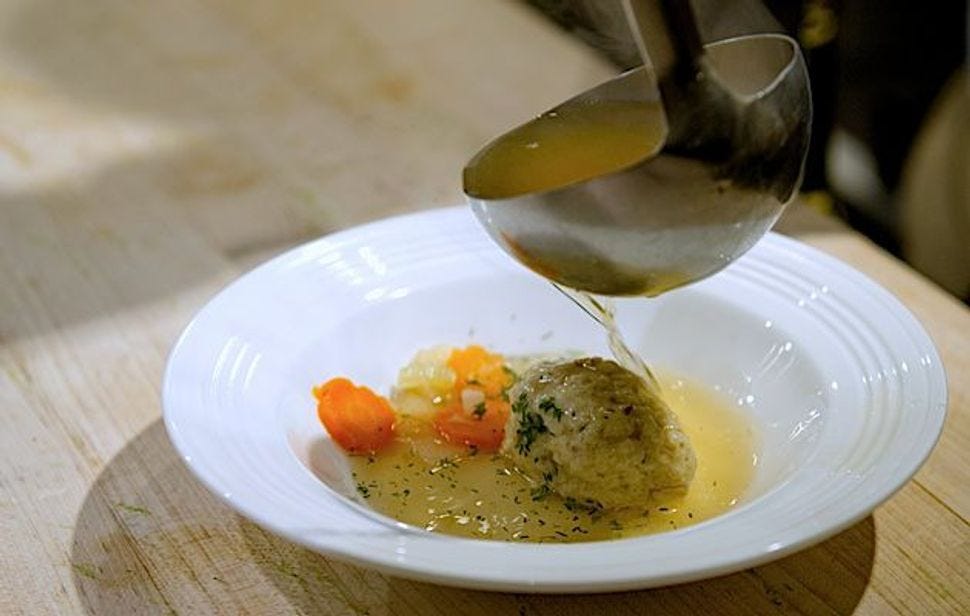
The Meal
Matzo meal is ground up matzo. Make sure you do not make the mistake of using matzo ball mix instead of plain matzo meal for this recipe. I know people who have done this, not realizing there was a difference. There is. As you might expect, I make my own matzo meal by grinding leftover matzos from Passover in my Vitamix into a medium-fine crumb. If you do this, beware that you don’t want it too fine, which would be cake meal, and which can lead to heavier matzo balls. Also note that if you grind shmura matzos into meal, which I often do, the resulting balls will have a gray tinge from the dark brown edges of those fire-baked matzos. They are still delicious.
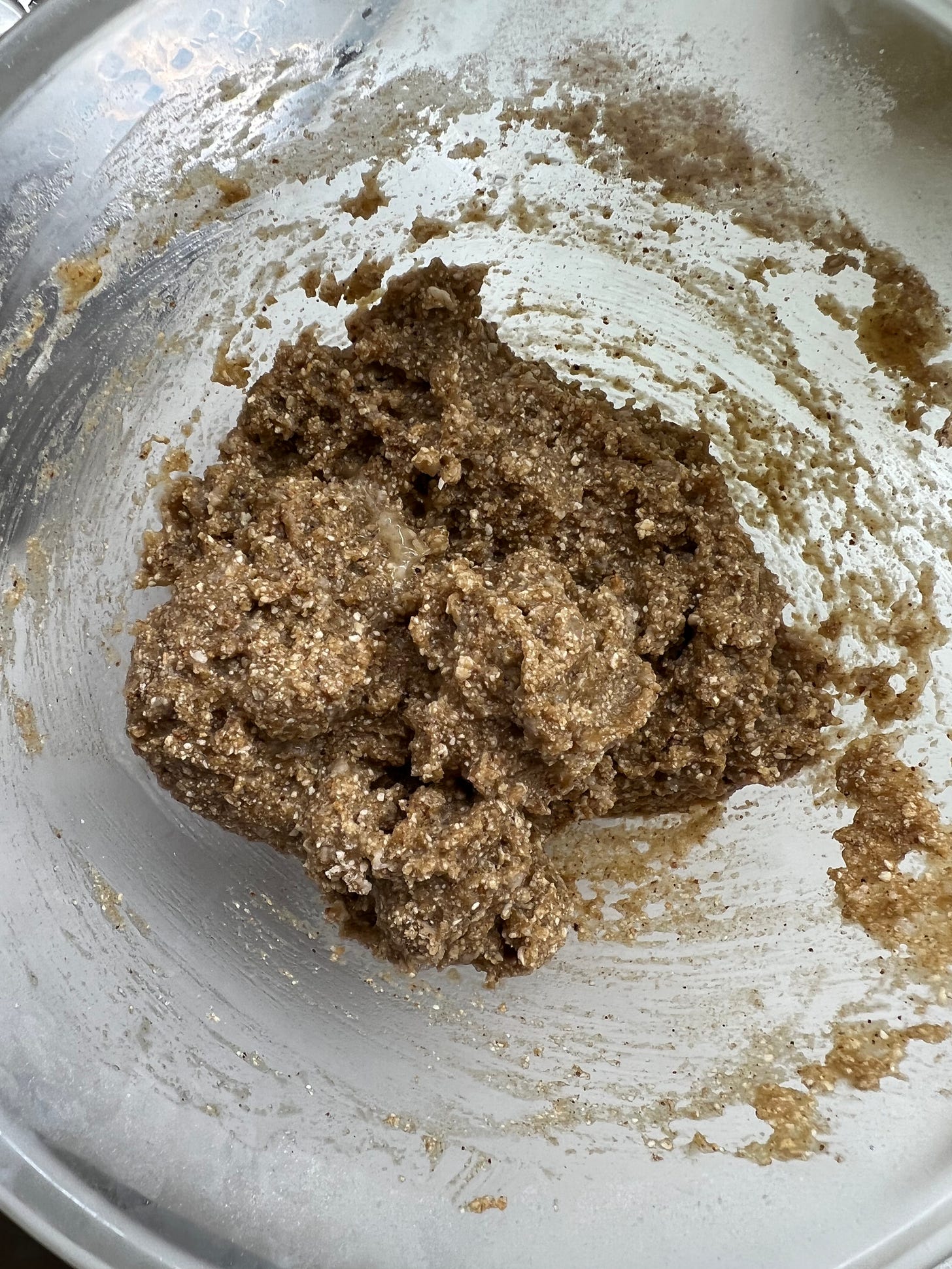
The Shaping
From what I have discerned—and I tested many different recipes and theories for matzo balls when I was writing The Mensch Chef—the secret to making light balls is to not roll them too tightly when you shape them. I’ve seen people roll and roll their matzo balls between their palms into perfect spheres. This seems to compact the ball, increasing the surface tension, which then can’t expand fully when it cooks. Instead, I handle my balls as gently as possible, ahem, scooping the chilled batter into a near ball from the get go and then gently coaxing it into an orb before dropping it into the boiling salted water to cook. That’s it. They puff up light and fluffy, double the size. Key, too, is transferring them directly from the cooking water into the hot soup, so make sure you’ve warmed up your broth.

A Few Final Points
I often make just half a matzo ball recipe, beating an egg and splitting it in half to keep the right proportions.
I haven’t included a recipe for my chicken soup because you can find that at any of the links to articles I gave above. Basically, you just put a lot of chicken (whole bird, parts, neck, bones, and feet) into a pot along with aromatics (onions, celery, and leeks), and root vegetables (carrots, parsnips, parsley root and a small turnip) in a pot with some herbs and seasonings (parsley, dill, black pepper, a point of star anise, a few allspice berries and a bay leaf) and boil it for 3 hours or more. Mmm.
There you have it. Matzo ball soup for a king. Or a queen, as the case may be. Long live matzo ball soup!
RECIPE: Mitchell’s Matzo Balls
(Yields 12 to 14 matzo balls, depending on size)
5 large eggs
1 teaspoon kosher salt, plus more for the cooking water
3 tablespoons (plus a little for good measure), chicken schmaltz, duck fat, or butter, melted, or olive oil or vegetable oil
¼ cup hot chicken soup, broth, or water
1 cup plus 2 tablespoon matzo meal
Combine the eggs, salt, schmaltz, and soup in a mixing bowl and beat with a fork until blended. Stir in the matzo meal and mix until combined. Don’t worry if the mixture seems soft. The matzo meal will swell and the fat will harden as the mixture sits in the fridge. Chill for at last 30 minutes and up to a day.
Bring about 5 quarts of water with about 1 ½ tablespoons kosher salt to a boil over high heat. In another pot, bring your chicken soup to a simmer. Remove the matzo ball mixture from the fridge. Wet your hands with cold water. Using a tablespoon, scoop out a heaping spoonful of the mixture into the palm of your hand, and using the edge of your second hand, gently press or coax the matzo ball into a sphere. Don’t be concerned if it is smooth, compact, or perfectly spherical. Drop immediately into the boiling water and continue shaping the rest, wetting, and if necessary, cleaning your hands from time to time, until all of the mixture is used up. The balls tend to sink when you add them to the pot, which is normal.
Let the water come back to a boil, then cover, reduce the heat to simmer, and cook 40 minutes, or so, until the matzo balls have puffed and risen to the surface. Ocassionally, a matzo ball or two may stick to the bottom of the pot. Give it a nudge with the back of a spoon to loosen it and it should float up to join the others. This may seem like a long time to cook, but you want to be sure the center of the matzo balls isn’t raw.
Using a slotted spoon, transfer the cooked balls into the hot soup and hold warm until ready to serve.



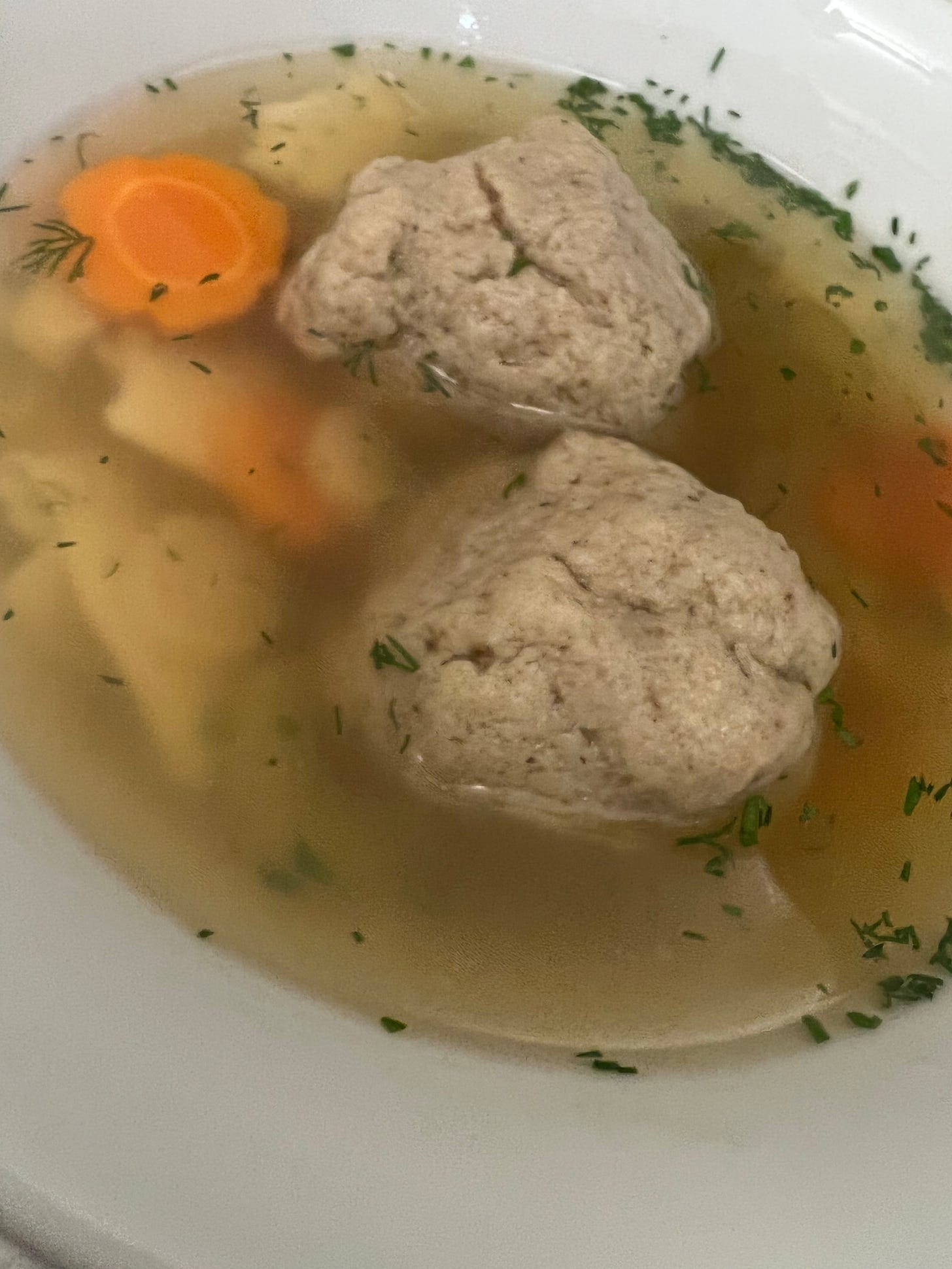
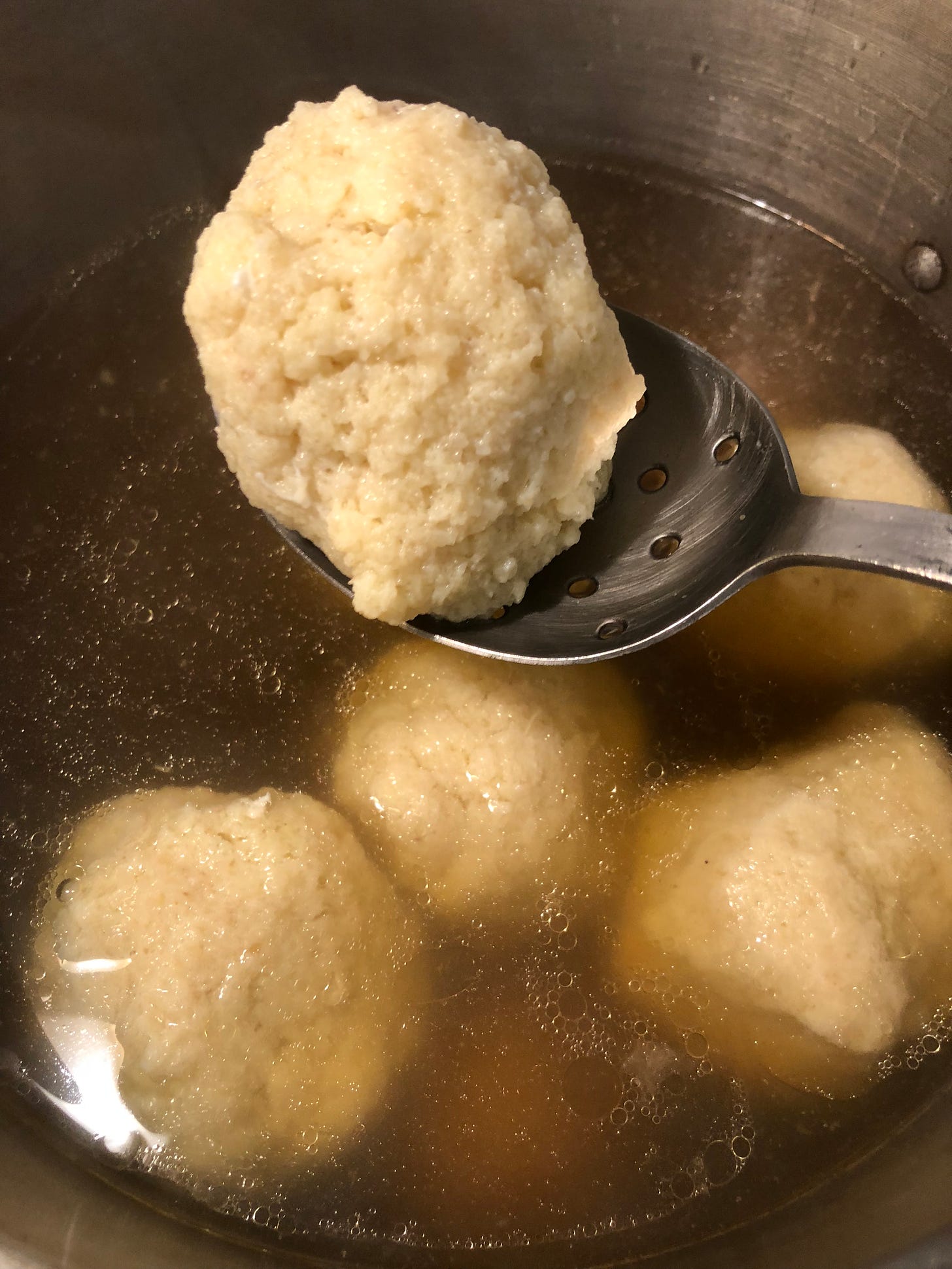
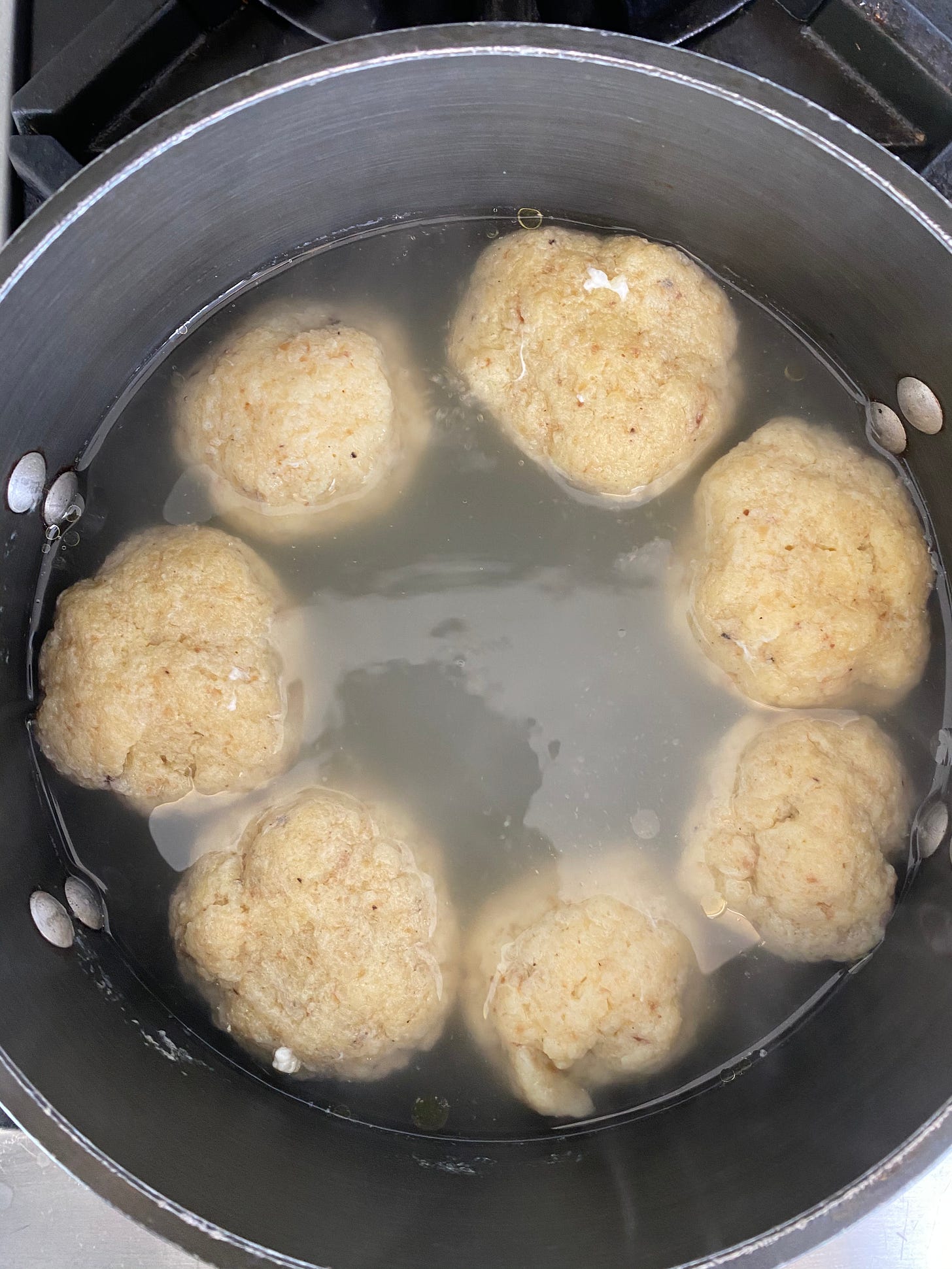
Yaasss!! But I cannot emphasize enough: make your chicken soup this way, strain it, chill it, and skim off the fat. That stuff is GOLD when it comes to making the matzah balls. Can you make matzah balls with oil? Yes, you can. Can you play the Mozart Requiem on a kazoo? Yes, you can. You get my point.
😂